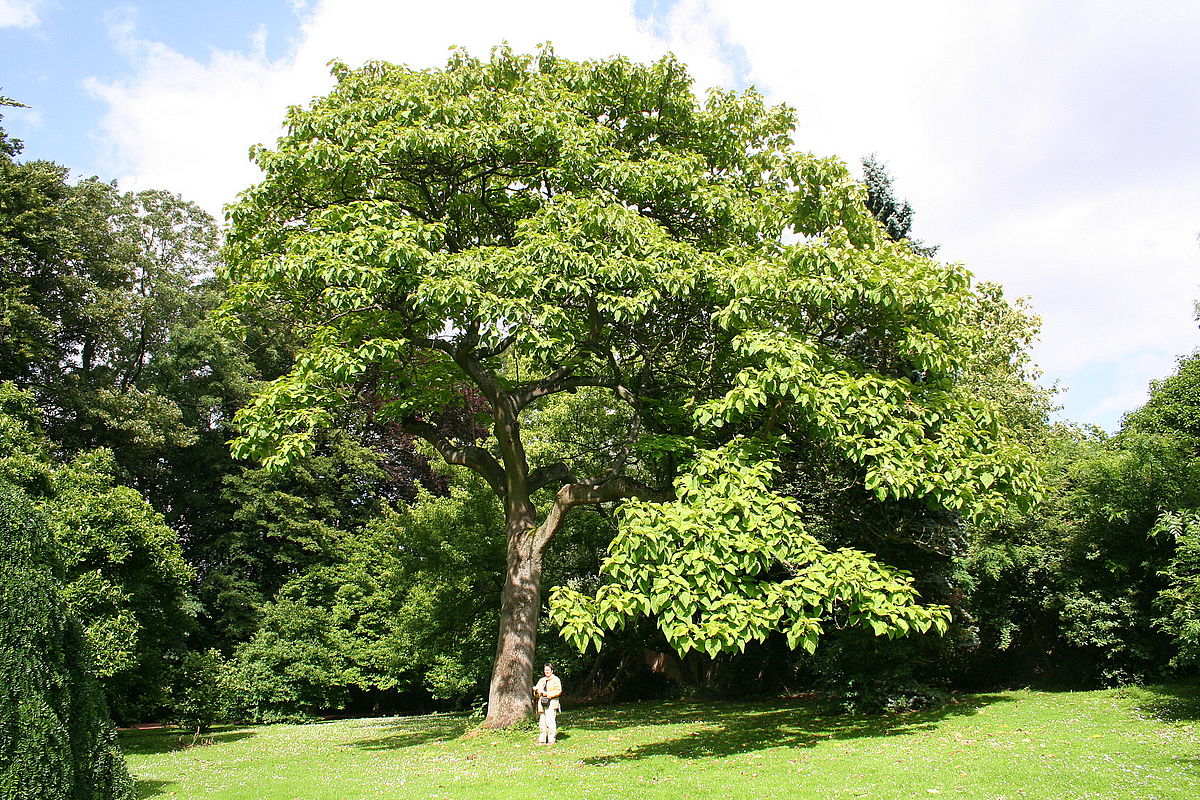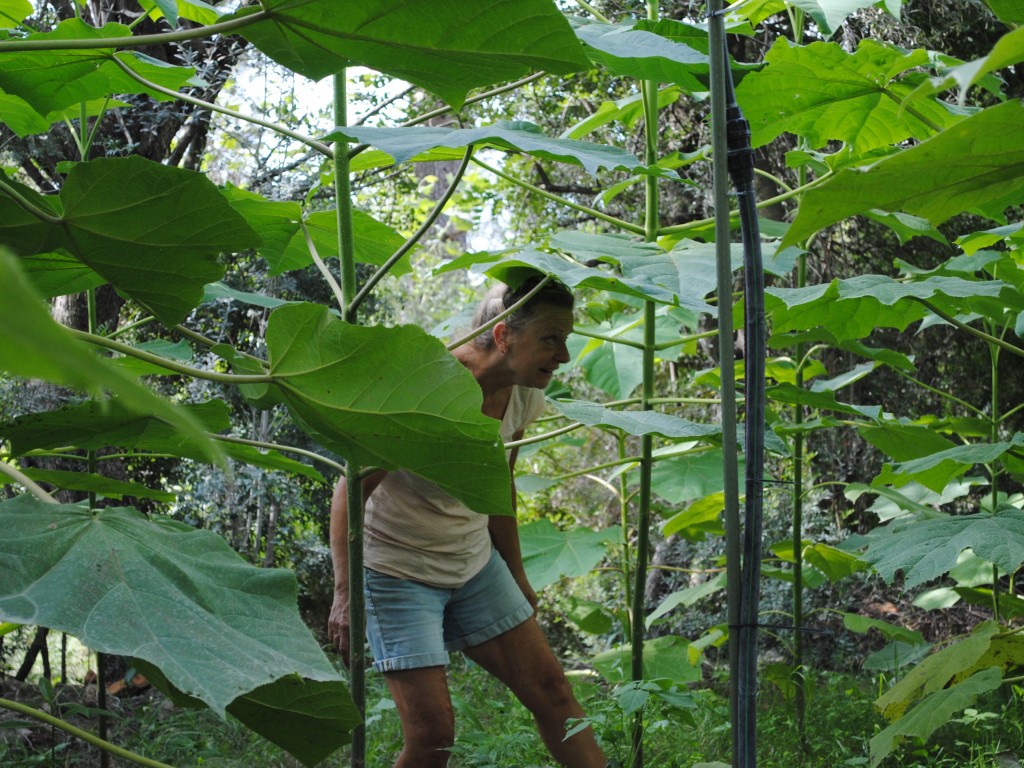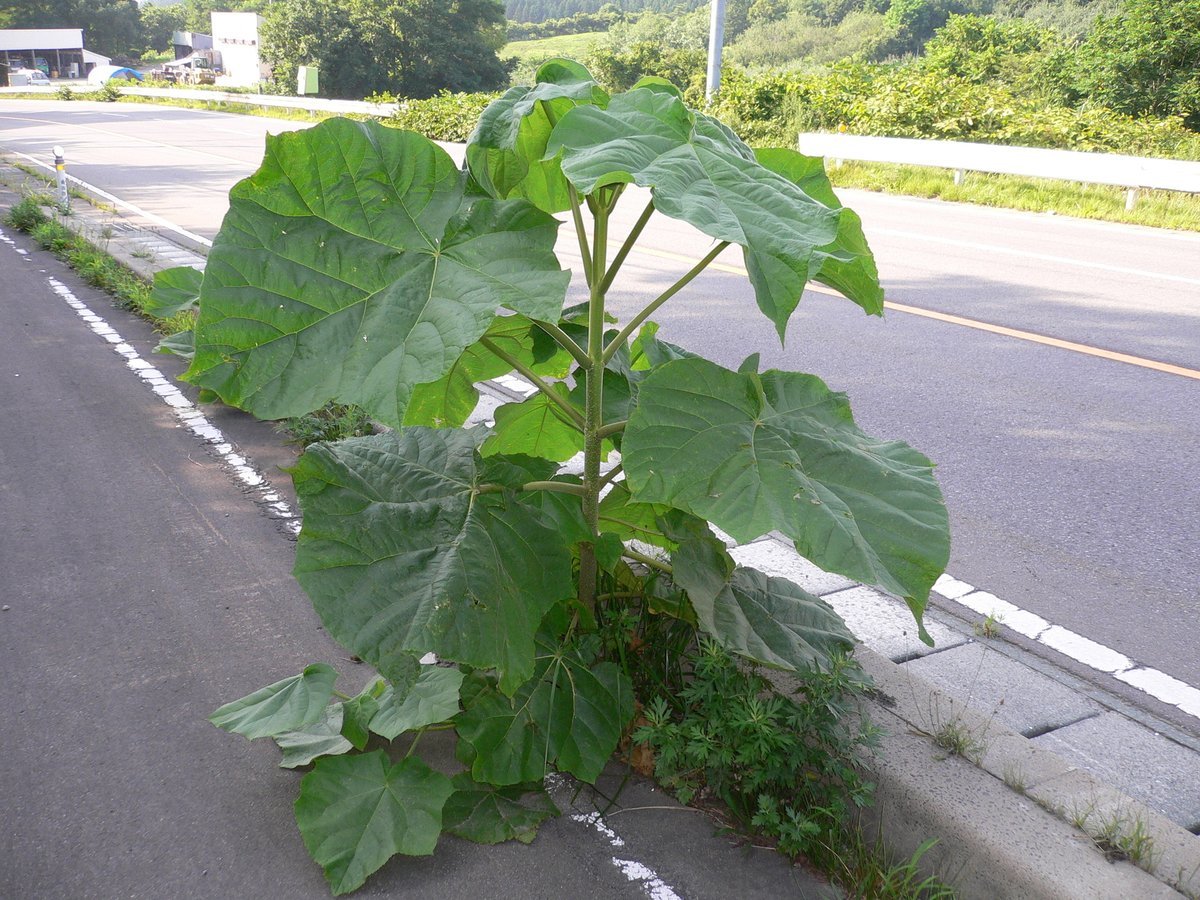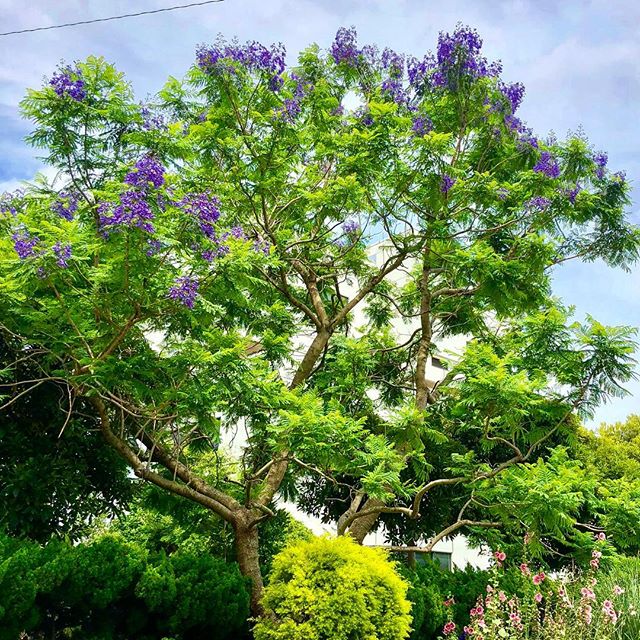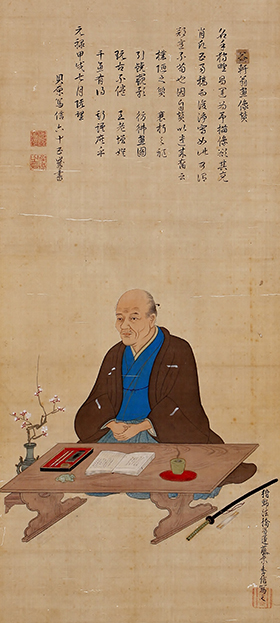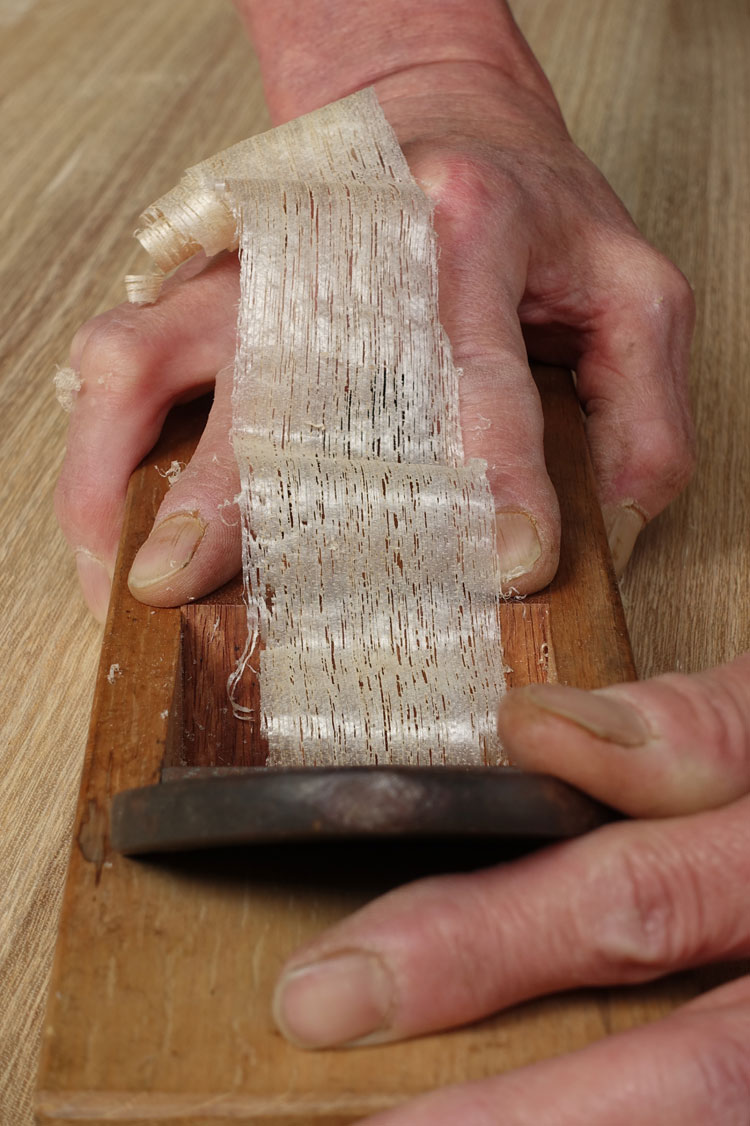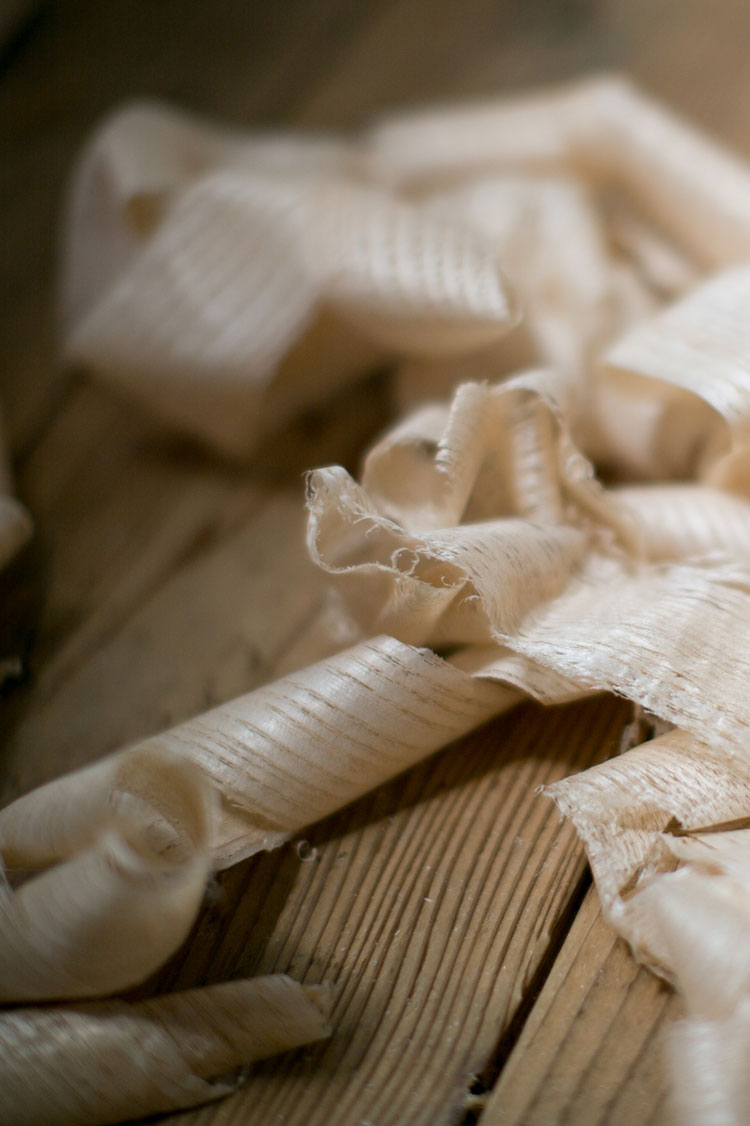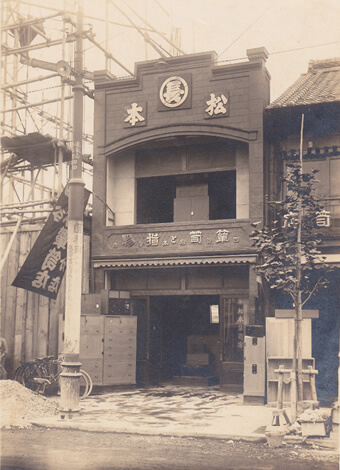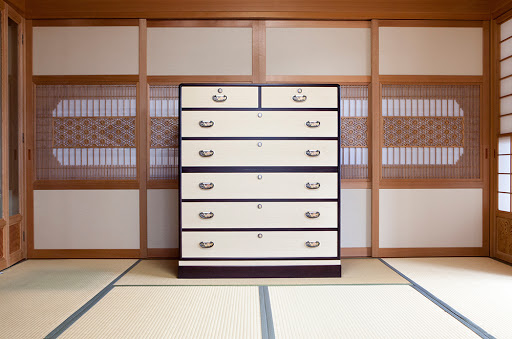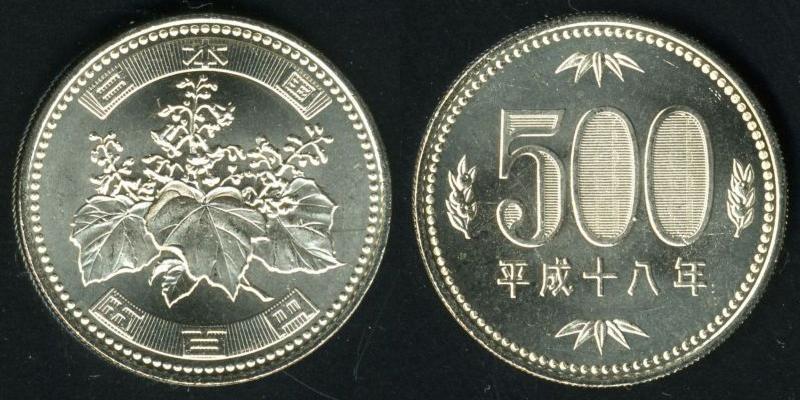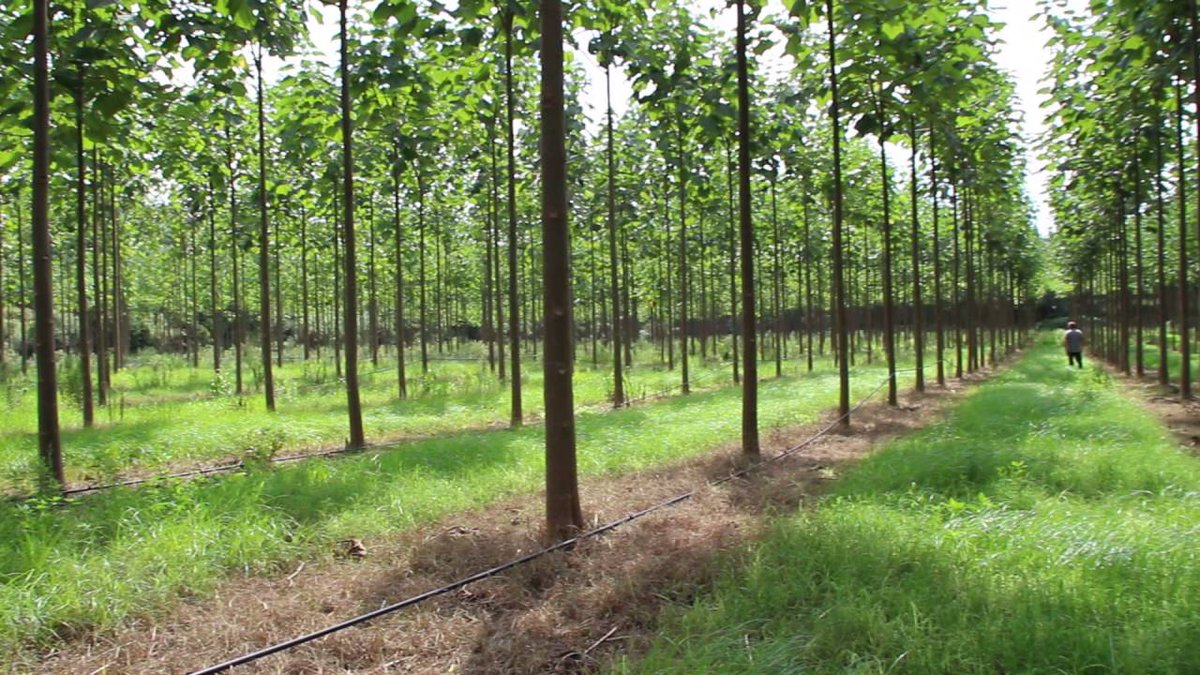The fastest growing tree in the world is the Empress Tree, Paulowina tomentosa, native to China and Japan, grows up to 6m in its first year and produces 3-4 times more oxygen during photosynthesis than any other known species of tree. It has many interesting characteristics.
When young it hardly looks like a tree at all as it must compensates for its rapid growth with gigantic leaves, up to 60cm across. As it matures, the leaves shrink to something more normal looking, but they are still huge. The tree with the man standing next it is 3 or 4 yrs old.
According to the "Aristotle of Japan", Kaibara Ekiken (1630-1714), it was customary for families who had a baby girl to plant a kiri (Paulownia tomentosa) in the garden: when she was old enough to marry the tree would be large enough to make the furniture needed for her dowry.
The main part of the dowry was her "tansu", or chest of drawers, where her personal belongings, documents, kimono clothing, utensils, etc. would be stored. Few people plant a kiri these days, but the tansu is still a popular item among newly weds. The kiri wasn't a random choice!
Most important, kiri wood is supremely difficult to burn. In case of a fire, the tansu would often remain even as the house burned, the interiors and contents were in perfect condition: "Flame retardancy of paulownia wood and its mechanism, Aug 2007, Journal of Materials Science"
In case of a fire, it was customary to throw a soaked blanket over the tansu and leave it, as the water made the sensitive wood swell, it created an air-tight seal that protected the contents from fire and water. For this reason it was often used for sea chests and storing cargo.
Kiri is also very soft and lightweight, which is great for transport and moving home (even the newlywed bride could lug the large tansu by herself, an important point before moving vans). Photo of a carpenter shop specializing in kiritansu.
The kiritansu protects against fire and moisture (perfect in a country of wooden cities in a sub tropical climate!), but the wood also contains paulonin, sesamin and tannin contained, giving it insect repellent, antibacterial and preservative properties. No lice, moths, rot!
Kiri has been used since ancient times by courts and nobles to store and protect documents and valuables, and this might be why the wood has been so highly regarded. Today the flowers of the kiri is used on the seal of government of Japan, and on its 500 yen coin.

 Read on Twitter
Read on Twitter